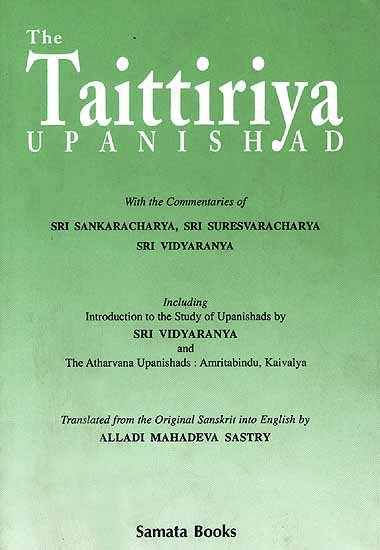Taittiriya Upanishad Bhashya Vartika
by R. Balasubramanian | 151,292 words | ISBN-10: 8185208115 | ISBN-13: 9788185208114
The English translation of Sureshvara’s Taittiriya Vartika, which is a commentary on Shankara’s Bhashya on the Taittiriya Upanishad. Taittiriya Vartika contains a further explanation of the words of Shankara-Acharya, the famous commentator who wrote many texts belonging to Advaita-Vedanta. Sureshvaracharya was his direct disciple and lived in the 9...
Verse 2.567
Sanskrit text and transliteration:
अन्यापेक्षं हि यद्रूपं न तत्तस्य स्वतो भवेत् ।
विक्रियाऽविक्रिया त्वस्य तत्त्वमन्यानपेक्षणात् ॥ ५६७ ॥
anyāpekṣaṃ hi yadrūpaṃ na tattasya svato bhavet |
vikriyā'vikriyā tvasya tattvamanyānapekṣaṇāt || 567 ||
English translation of verse 2.567:
That form, viz., mutability, which is, indeed, dependent on some other factor, cannot be its real nature. But immutability is its real nature, because it is not dependent on another factor.
Notes:
The Self is the knower only when it is in association with the upādhi like internal organ, etc. To be a knower it has to depend upon other factors. In other words, cognition which is an act involves change, and the Self which is by its very nature immutable comes to have change as it were when it assumes the status of a knower in waking and dream states through the upādhi of the internal organ. But in the state of deep sleep it does not perceive anything at all. It remains, then, in its natural state of immutability. That which is not dependent on external factors must be considered to be the real nature of a thing, and what is caused by external factors cannot be its real nature. This point can be made clear by means of an example. For remaining in its own state clay does not depend on external factors. It remains what it is without undergoing any change so Jong as external agencies like potter, etc., do not interfere with its natural state. It assumes the form of a pot through the work of a potter and other factors. In the absence of these factors it remains in its natural state as clay. In short, while its clay-form which is not dependent on other factors is real, its pot-form caused by external factors is illusory. It is this idea which has been conveyed by the vācārambhaṇa text of the Chāndogya (IV, i, 4) when it says that the clay alone is real, while the modification is only a name arising from speech. In the same way, the immutable condition of the Self without the perception of anything whatsoever in the state of deep sleep is its natural state and is, therefore, real.
